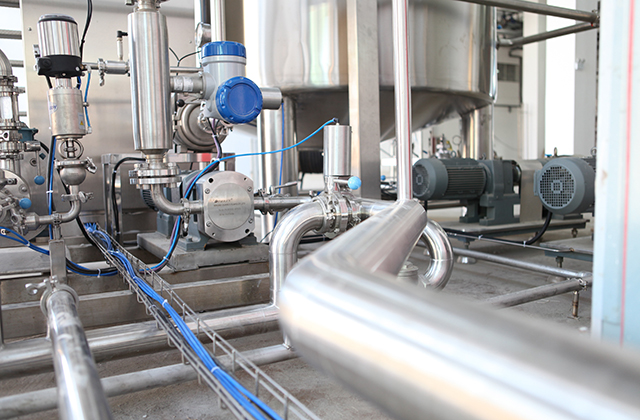
Trenchless Pipe Repair Options for Underground Pipelines
Maintaining pipes is crucial for the proper functioning of residential and commercial properties. When pipes are damaged, they can cause issues such as leaks, blockages, and even structural damage. Traditionally, repairing pipes required excavation or replacement, which was costly and time-consuming. However, pipe relining is a modern and cost-effective solution that can repair pipes without excavation or replacement. In this blog post, we will provide a step-by-step guide to the pipe relining process, its benefits, and long-term solutions. Pipe relining companies Sydney somehow provide a long term for your building pipe problems, they can address using the new state of the art technology.
What is Pipe Relining?
Pipe relining involves inserting a liner inside a damaged pipe and curing it to create a new pipe inside the old one. This process is also known as cured-in-place pipe (CIPP) lining. Pipe relining is a type of trenchless technology that eliminates the need for excavation or replacement, saving time and money. It is suitable for sewer, drain, and water pipes made of different materials such as PVC, cast iron, and clay.
Why is Pipe Relining Important?
Not repairing damaged pipes can lead to more significant issues such as leaks, blockages, and even structural damage. Pipe relining is important because it can prevent these issues from happening. It is also a more cost-effective and environmentally friendly solution than traditional repair methods. Pipe relining eliminates the need for excavation or replacement, reducing the impact on the environment.
Pipe Relining Process
- Inspection: The first step in the pipe relining process is to inspect the damaged pipe using CCTV cameras. This will determine the extent of the damage and if pipe relining is a suitable solution.
- Cleaning: The damaged pipe is then cleaned using high-pressure water jets. This removes any debris and prepares the pipe for relining.
- Inserting the Liner: A liner made of felt or fiberglass is saturated with epoxy resin and inserted into the damaged pipe. The liner is inflated to the size of the pipe and pressed against the walls using air or water pressure.
- Curing the Liner: The liner is cured using hot water or steam. This hardens the resin, creating a new pipe inside the old one.
- Final Inspection: The new pipe is inspected using CCTV cameras to ensure that it is properly installed and cured.
Benefits of Pipe Relining
Pipe relining offers several benefits over traditional repair methods:
- Cost-Effective: Pipe relining is a more cost-effective solution than excavation or replacement.
- Time-Saving: Pipe relining can be completed in a matter of hours, whereas excavation or replacement can take days or even weeks.
- Durable: Pipe relining creates a new pipe inside the old one, making it more durable and resistant to future damage.
When to Use Pipe Relining
Pipe relining is suitable for various types of damage, including cracks, leaks, and blockages. It is also suitable for pipes made of different materials such as PVC, cast iron, and clay. Pipe relining is an excellent solution for:
- Residential and commercial properties with damaged pipes
- Properties with restricted access or hard-to-reach pipes
- Properties with historical or cultural significance where excavation is not feasible
Long-Term Solutions for Pipe Relining
Maintaining pipes after relining is crucial for their longevity. Here are some tips to ensure that your pipes remain in good condition:
- Avoid flushing or pouring harmful chemicals down the drain as they can damage the liner.
- Regularly inspect the pipes using CCTV cameras to detect any issues before they become significant problems.
- If you notice any issues such as leaks or blockages, contact a pipe relining company immediately to address the issue.
Pipe relining companies typically offer warranties and guarantees for their work. These warranties may vary, so it is essential to understand the terms and conditions before signing a contract. Reputable pipe relining companies will offer warranties that cover the material and installation. They will also guarantee that the relined pipe will be free of defects and will not fail due to workmanship issues.
It is crucial to choose a reputable pipe relining company to ensure that the job is done correctly. Here are some factors to consider when selecting a pipe relining company:
- Experience: Choose a company that has experience in pipe relining and has completed similar projects in the past.
- Reputation: Read reviews and testimonials from past clients to gauge the company’s reputation.
- Certifications: Ensure that the company has the necessary certifications and licenses to perform pipe relining work.
Conclusion
Pipe relining is a modern and cost-effective solution for repairing damaged pipes. It eliminates the need for excavation or replacement, saving time and money. By following the steps outlined in this guide, you can ensure that your pipes remain in good condition for years to come. If you’re experiencing issues with your pipes, contact a reputable pipe relining company for a consultation. Protect your property and the environment by choosing pipe relining for your pipe patching needs.